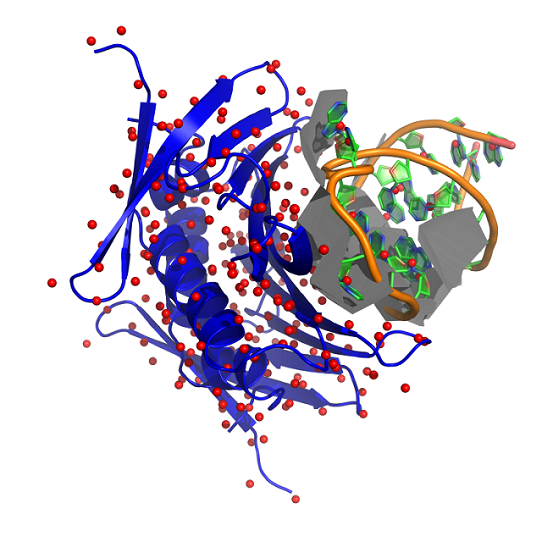Section: Research Program
3D interaction and structure prediction
Participants : Julie Bernauer, Amélie Héliou.
The biological function of macromolecules such as proteins and nucleic acids relies on their dynamic structural nature and their ability to interact with many different partners. This is specially challenging as structure flexibility is key and multi-scale modelling [26] , [36] and efficient code are essential [40] .
Our project covers various aspects of biological macromolecule structure and interaction modelling and analysis. First protein structure prediction is addressed through combinatorics. The dynamics of these types of structures is also studied using statistical and robotics inspired strategies. Both provide a good starting point to perform 3D interaction modelling, accurate structure and dynamics being essential.
Our group benefits from a good collaboration network, mainly at Stanford University (USA), Hkust (Hong-Kong) and McGill (Canada). The computational expertise in this field of computational structural biology is represented in a few large groups in the world (e.g. Pande lab at Stanford, Baker lab at U.Washington) that have both dry and wet labs. At Inria, our interest for structural biology is shared by the Abs and Orpailleur project-teams. Our activities are however now more centered around protein-nucleic acid interactions, multi-scale analysis, robotics inspired strategies and machine learning than protein-protein interactions, algorithms and geometry. We also shared a common interest for large biomolecules and their dynamics with the Nano-D project team and their adaptative sampling strategy. As a whole, we contribute to the development of geometric and machine learning strategies for macromolecular docking.
Game theory was used by M. Boudard in her PhD thesis, defended in 2015, to predict the 3d structure of RNA. In her PhD thesis, co-advised by J. Cohen (Lri ), A. Héliou is extending the approach to predict protein structures.
|
Statistical and robotics-inspired models for structure and dynamics
Participants : Julie Bernauer, Amélie Heliou.
Despite being able to correctly model small globular proteins, the computational structural biology community still craves for efficient force fields and scoring functions for prediction but also good sampling and dynamics strategies.
Our current and future efforts towards knowledge-based scoring function and ion location prediction have been described in 3.3.1 .
Over the last two decades a strong connection between robotics and computational structural biology has emerged, in which internal coordinates of proteins are interpreted as a kinematic linkage with rotatable bonds as joints and corresponding groups of atoms as links [55] , [31] , [43] , [42] . Initially, fragments in proteins limited to tens of residues were modeled as a kinematic linkage, but this approach has been extended to encompass (multi-domain) proteins [41] . For RNA, progress in this direction has been realized as well. A kinematics-based conformational sampling algorithm, KGS, for loops was recently developed [38] , but it does not fully utilize the potential of a kinematic model. It breaks and recloses loops using six torsional degrees of freedom, which results in a finite number of solutions. The discrete nature of the solution set in the conformational space makes difficult an optimization of a target function with a gradient descent method. Our methods overcome this limitation by performing a conformational sampling and optimization in a co-dimension 6 subspace. Fragments remain closed, but these methods are limited to proteins. Our objective is to extend the approach proposed in [38] , [55] to nucleic acids and protein/nucleic acid complexes with a view towards improving structure determination of nucleic acids and their complexes and in silico docking experiments of protein/RNA complexes. For that purpose, we have developed a generic strategy for differentiable statistical potentials [1] , [53] that can be directly integrated in the procedure.
Results from in silico docking experiments will also directly benefit structure determination of complexes which, in turn, will provide structural insights in nucleic acid and protein/nucleic acid complexes. From the small proof-of-concept single chain protein implementation of the KGS strategy, we have developed a robust preliminary implementation that can handle RNA and will be further developed to account for multi-chain , with an extensive computational and biological validation.


